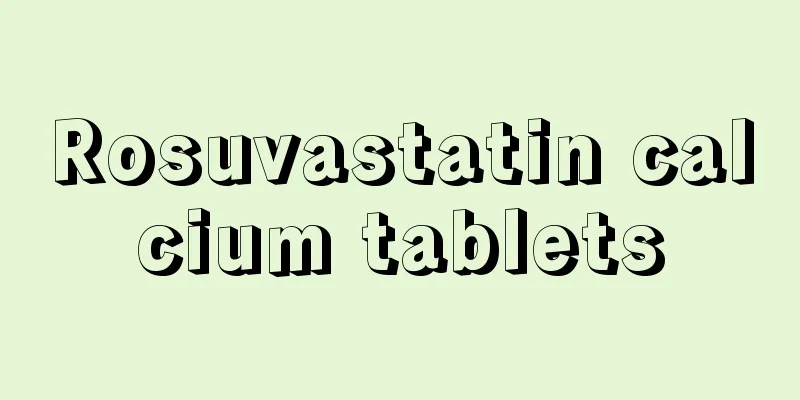Enlargement of the pancreatic tail

|
Enlargement of the tail of the pancreas is common after a large meal, and this condition is often considered to be pancreatitis. Enlargement of the pancreatic tail is often a related manifestation of hospital CT scans. This manifestation means that there is inflammation in the surrounding area. At this time, it is necessary to listen to the doctor's advice and seek treatment based on the relevant symptoms. You may not know much about pancreatitis. Here we will introduce some relevant knowledge about pancreatitis in detail. 1. What is pancreatitis? Pancreatitis is an inflammation of the pancreas due to obstruction of the pancreatic duct, increased pressure in the duct and poor blood circulation, but its essence is that pathogenic factors cause the pancreatic juice to overflow and come into contact with the pancreatic parenchyma, activating the digestive enzymes in the pancreatic juice, causing pancreatic autodigestion and pathological changes such as edema, bleeding and necrosis. Currently, most people believe that trypsin does not act directly on the pancreatic parenchyma to cause autodigestion, but rather it activates other enzymes that lead to local and systemic changes in acute pancreatitis. Common causes of acute pancreatitis include gallstones, biliary ascariasis, overeating, and excessive drinking. Pancreatitis can be acute or chronic. The most common case is acute pancreatitis, the symptoms of which are sudden and persistent abdominal pain that may spread to the shoulders and lower back. Often accompanied by nausea, vomiting, fever, etc. Physical examination may reveal obvious tenderness and muscle tension in the left upper abdomen, weakened or disappeared abdominal distension and bowel sounds, etc. Blood and urine amylase levels are often elevated. Abdominal puncture to measure amylase, abdominal X-ray examination, B-ultrasound and CT, etc., all have diagnostic or differential diagnostic value. The treatment of pancreatitis is based on the condition of the disease. For mild cases, non-surgical treatment is generally used, while for severe cases or those that are ineffective with non-surgical treatment, surgical treatment should be used. For prevention, you should actively treat cholelithiasis and biliary ascariasis, and avoid excessive drinking and overeating. 2. Precautions for patients with pancreatitis 1. In case of acute attack, go to the hospital immediately and receive further treatment according to acute pancreatitis. Even if there is no acute attack, go to the hospital for regular check-ups. 2. People with diabetes should control their diet according to the doctor's orders and use hypoglycemic drugs under the guidance of a physician. 3. People with diarrhea should adopt a high-sugar, high-protein, low-fat diet. 4. You must abstain from alcohol and smoking. Avoid overeating or eating too much to prevent further damage to pancreatic function. Pay attention to details in your daily life when you have pancreatitis, and be sure to put it into practice once you understand it. At the same time, using pancreatic soup for treatment is the key. |
<<: How to drink green tea powder
>>: Which kind of matcha powder is good
Recommend
What to do if teenagers have dry eyes
Dry eyes are often more common among teenagers. B...
Will I gain weight if I drink yogurt every day?
Many people like to drink yogurt and buy a few ba...
What is the matter with black gums
Teeth can easily develop problems due to sudden c...
Is late stage esophageal cancer contagious?
Is esophageal cancer contagious in its late stage...
Early symptoms and manifestations of colorectal cancer
Early symptoms of colorectal cancer include abdom...
Can lettuce and milk be eaten together
Vegetables and milk are both familiar foods in ou...
What disease is caused by thick yellow tongue coating?
Thick yellow tongue coating is a symptom that man...
Symptoms of chickenpox
Many people have had chickenpox when they were yo...
Can stomach discomfort at the age of 20 be stomach cancer?
Could stomach discomfort at the age of 20 be stom...
How often should I take a bath with sulfur soap
Sulfur soap is different from ordinary soap or pe...
Can a 15-year-old get endometrial cancer?
The chances of developing endometrial cancer at t...
How to remove super glue from skin?
Super glue is a product that we use frequently in...
Is it appropriate for a boy and girl to get married when they are 6 years apart?
According to traditional Chinese concepts, men us...
Is there formaldehyde in putty
When we decorate the walls of a new house, we hav...
What are the dangers of not treating kidney cancer in time
The number of people suffering from kidney cancer...









